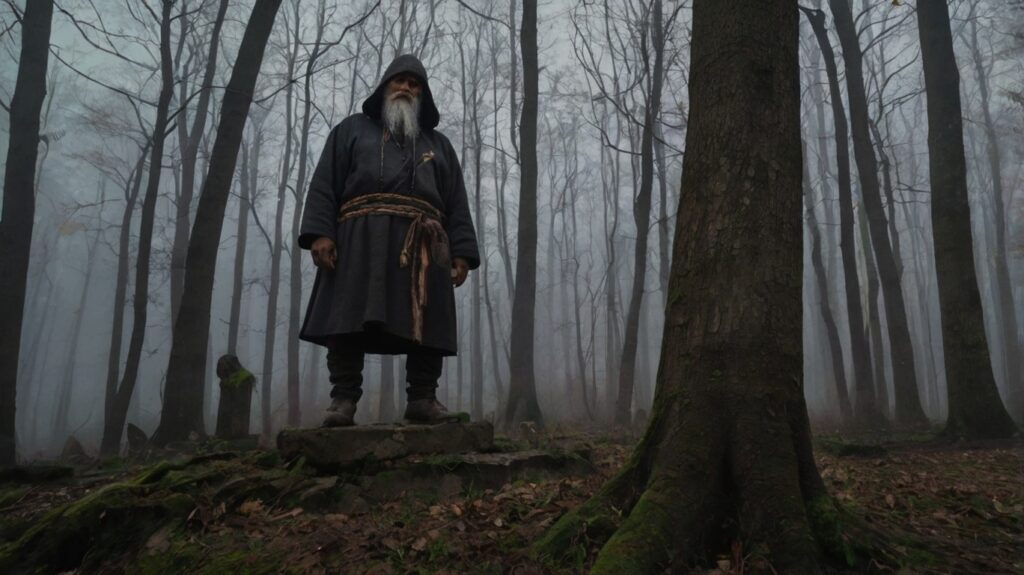In the rich tapestry of Serbian folklore, Đeman stands out as one of the most mysterious and compelling figures. Rooted deeply in the mythology and oral traditions of the region, Đeman embodies elements of both the supernatural and the symbolic, offering fascinating insights into the cultural and spiritual beliefs of Serbian people. Like many mythical creatures, Đeman serves as more than just a subject of stories—he is a symbol of the natural and mystical forces that influence human life, with tales surrounding him meant to entertain, warn, and educate.
This article explores the origins, characteristics, symbolism, and cultural significance of Đeman, shedding light on how this mythical figure fits into the broader landscape of Serbian mythology and folklore.
Origins of Đeman in Serbian Folklore

Đeman’s origins are somewhat elusive, as he appears in various forms across stories passed down through generations. Folklorists and historians have long attempted to trace the roots of Đeman, finding that his story is interwoven with a mixture of local superstitions, natural elements, and perhaps even historical figures whose legends transformed over time. His name, meaning and specific attributes often vary depending on the region and storyteller, which is common in folklore that survives primarily through oral transmission.
However, Đeman is generally described as a supernatural entity, neither entirely malevolent nor benevolent, but rather existing in a complex realm between the two. He is sometimes portrayed as a solitary figure, representing nature’s untamed aspects, and at other times as a trickster, wielding magic or knowledge that he uses to both aid and challenge human beings.
Characteristics and Depictions of Đeman
Đeman is traditionally depicted as a large, powerful figure who is both awe-inspiring and slightly fearsome. His appearance varies but often includes some combination of human and animal traits, symbolizing his connection to the wild and to natural forces beyond human control. Đeman might have features like:
- Human-Like Form with Animalistic Traits: Đeman may appear as a tall man but with features that resemble those of animals, such as sharp claws or glowing eyes. These traits signify his role as a creature straddling the line between human and nature.
- Strength and Vitality: Đeman is usually portrayed as incredibly strong, representing the unyielding power of nature itself.
- Supernatural Abilities: Legends attribute Đeman with various magical abilities. He can disappear at will, manipulate weather, and even read human thoughts, showcasing his mysterious and otherworldly origins.
Đeman is often associated with forests, mountains, and other remote, untamed places. These settings emphasize his connection to nature and suggest that he guards the unknown parts of the world where few dare to venture. Đeman’s ability to blend into these surroundings makes him both a feared and respected entity.
Symbolism of Đeman in Serbian Culture
As with many mythological figures, Đeman represents various aspects of Serbian cultural beliefs and values. His symbolism reflects a blend of reverence for nature, respect for unknown forces, and the moral lessons that were traditionally passed down through folklore.
The Power of Nature
Đeman embodies nature’s unpredictable and often unforgiving character. Serbian culture, like many others, holds a deep respect for the land and the natural world, understanding both its beauty and its dangers. Đeman, with his untamed characteristics and magical powers, serves as a reminder of the power of nature and the importance of coexisting with it rather than attempting to dominate it.
The Bridge Between Good and Evil
Unlike many mythological creatures that are either purely good or evil, Đeman occupies a middle ground, embodying both helpful and harmful traits depending on the situation. This duality represents the nuanced view of morality in Serbian folklore, where characters and creatures are often complex and multifaceted. Đeman’s actions may sometimes be cruel, but they are often a response to disrespect or arrogance shown by humans, teaching listeners the importance of humility.
The Unknown and the Supernatural
In many tales, Đeman symbolizes the mysteries of the unknown. His presence in remote and dark places, along with his otherworldly powers, evokes the fear and fascination that come with exploring the unfamiliar. Đeman represents the supernatural as a force that is not always easily understood or controlled, mirroring humanity’s own curiosity and fear of the unknown.
Đeman’s Role in Serbian Folklore
Đeman appears in various roles across Serbian folklore. He may be a guardian of sacred places, a protector of certain families, or a menacing figure who punishes wrongdoers. His character shifts depending on the moral or lesson that each story intends to impart.
Protector of Nature
In some stories, Đeman is depicted as a guardian of the forests, mountains, or rivers. Those who attempt to exploit or harm these natural environments without respect may find themselves facing his wrath. In this way, Đeman acts as a protector of the natural world, standing up against those who disregard its sanctity.
Punisher of the Arrogant
Đeman often serves as a moral figure who punishes those who act arrogantly or disrespectfully. A person who boasts about their strength or intelligence, for example, might find themselves bested by Đeman in some way, teaching them humility. Through these tales, Đe-man becomes a symbol of the importance of humility, particularly in the face of nature’s grandeur.
Aiding the Worthy
Though he is often depicted as fearsome, Đe-man is also known to help those who are kind, respectful, and brave. In some stories, he appears to assist heroes in need, guiding them or offering wisdom. This element of his character emphasizes the idea that the unknown, while potentially dangerous, can also be a source of knowledge and growth for those who approach it with the right attitude.
Modern Interpretations and Legacy of Đeman
In recent years, Đeman has seen a resurgence in popularity, particularly as Serbian culture and folklore have gained more visibility. As Serbia explores its cultural heritage, Đe-man has emerged as a symbol of national identity and tradition. Artists, writers, and filmmakers have reimagined Đe-man, presenting him as both a traditional figure and a modern-day icon.
In some contemporary interpretations, Đe-man is seen as an environmental symbol, embodying the need to protect the land and respect nature’s boundaries. This interpretation resonates with global concerns about environmental conservation, allowing the myth of Đe-man to remain relevant in modern society.
Đeman in Serbian Popular Culture
Beyond folklore, Đeman’s image has found its way into various forms of popular media, including literature, film, and art. These portrayals often emphasize his mysterious, protective, and sometimes menacing qualities, aligning with his traditional role as a figure that commands both respect and caution. Festivals, art exhibitions, and cultural events celebrating Serbian mythology frequently include representations of Đe-man, helping preserve and promote this fascinating figure.
Conclusion
The figure of Đeman is one of the most enigmatic and profound in Serbian folklore, serving as a bridge between the natural and supernatural worlds. His tales, which emphasize humility, respect for nature, and a cautious curiosity about the unknown, resonate with the values that are deeply rooted in Serbian culture. As folklore continues to shape modern cultural identity, Đe-man remains a powerful symbol of Serbia’s rich heritage, embodying timeless lessons and a unique connection to the natural world. Whether viewed as a cautionary figure, a guardian, or a complex hero, Đe-man’s legacy continues to capture the imagination of those who seek to understand the mysteries of Serbian mythology.
Frequently Asked Questions
What is Đeman known for in Serbian folklore?
Đe-man is known as a powerful and mysterious figure in Serbian folklore, embodying the untamed forces of nature and often appearing as a guardian or punisher. He serves as both a protector and a reminder of the importance of respecting the natural world.
Is Đe-man considered good or evil?
Đe-man does not fit into traditional categories of good or evil. Instead, he is a complex figure who can help or harm depending on the context. This duality represents a moral lesson about respect, humility, and the unpredictable nature of life and nature.
Where does De-man usually appear in stories?
Đe-man often appears in remote natural locations, such as forests, mountains, or rivers, symbolizing his connection to the wild and places beyond human control.
How does De-man reflect Serbian cultural beliefs?
De-man embodies Serbian values like respect for nature, humility, and an appreciation for the mysteries of the unknown. His stories often carry moral lessons that encourage listeners to respect both the natural and supernatural worlds.
Has De-man influenced Serbian popular culture today?
Yes, De-man has become a prominent figure in Serbian cultural events, art, and literature. As interest in traditional Serbian folklore grows, Đe-man’s character has been adapted into modern contexts, often symbolizing environmental protection or national pride.
Why is De-man an important figure in Serbian mythology?
Deman’s importance lies in his multifaceted role as a protector, punisher, and embodiment of nature’s power. He represents the balance between humans and nature, offering a reminder of the need for humility and respect for the unknown forces that shape life.










